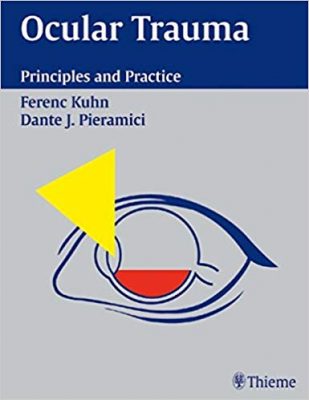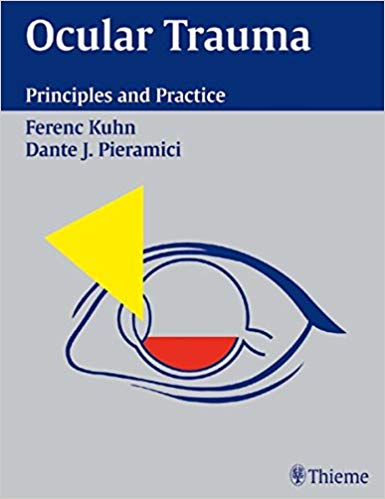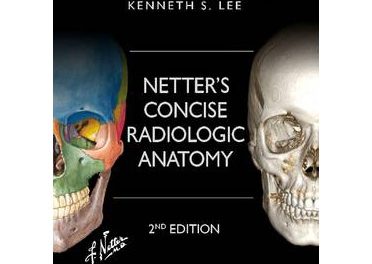 Editors: Ferenc Kuhn, MD; and Dante J. Pieramici, MD
Editors: Ferenc Kuhn, MD; and Dante J. Pieramici, MD
Publisher: Thieme – 468 pages
Book Review by: Nano Khilnani
Ocular trauma is a multidisciplinary specialty wherein collaboration among colleagues is the best means of learning about different types of injuries and on different parts of the ocular anatomy. Collaboration helps greatly in treating patients with a variety of injuries to the eyes.
This is because what is not be available in books and other media can often be found in the heads of those specialist clinicians who have encountered different types of ocular trauma in their patients, the editors point out in the Preface. These individuals have gained not only insight that comes from experience when treating their patients, but also detailed knowledge gained from new research studies.
Fifty-three specialists, most of them ophthalmologists and others in fields related to the eye or eye injury, from all over the United States and six other countries – Egypt, France, Germany, Hungary, Israel, and Mexico – authored the chapters of this book on various types of injury and trauma on the eyes.
In addition, two patients also contributed to this book by writing about the severe injuries they became victims of, and thereby provide perspectives that eye doctors cannot immediately know their extent, until further detailed examination and prognosis.
The 38 chapters of this book are organized around 5 Sections that we list below to provide you a broad overview of the contents of this book:
- Section I. General Conditions
- Section II. Emergency Management
- Section III. Mechanical Globe Management
- Section IV. Non-Mechanical Globe Injuries
- Section V. Non-Globe Injuries
As the chapters are too numerous to list here, we provide you below an alphabetical list of some common ailments, diseases disorders, as well as acronyms, procedures, treatments, parts of ocular anatomy, and related terms that you can use when browsing through this book review to find information on a particular item or phrase that may be in this book. This list is far from comprehensive.
Alkali burn, anterior segment trauma, Bell’s palsy, black eye, blindness (medical and legal definitions) blowout fracture of the orbit, burns, chemical eye injury conjunctivitis, closed globe injury, corneal abrasions, corneal injuries, corneoscleral injuries, EOFB, eyelid lace, facial trauma, foreign bodies, globe laceration, globe rupture, IOFB, irrigation, muscular entrapment, open globe injury orbital trauma, patching, posterior segment trauma, sub-conjunctiva hemorrhages, perforated eardrum, photic trauma, poly-trauma. scleral injuries, and suturing,
The material in the chapters is organized for easy retrieval under these (and other) headings such as
- General Evaluation
- History
- Pathophysiology
- Special Counseling Issues
- Management
- Alternative Treatment Methods
- Rehabilitation Goals
- Late Complications
- Teamwork Summary
- Summary
- References
This book is different from others on ocular trauma in that it
- Contains up-to-date collection of information on the management of patients with eye injuries and is presented in a format that is easy to find and easy to use.
- Organizes material that is clinically relevant for daily practice
- Assists the reader who treats patients with eye injuries in making decisions about what to do, how to do it, why to do it, and what not to do
- Presents information in easy-to-read bullet points
- Highlights important points by labeling them as Pearls, Pitfalls, and Special Consideration
- Does not contain duplicate information
- Provides the reader with a coherent approach, resolving conflicting information
- Includes topics that are only occasionally or never discussed in other books
- Differs from other books by using a systematic tissue-by-tissue approach instead of the traditional approach that divides the eye into anterior and posterior segments
- Uses footnotes to provide additional information that may otherwise interrupt flow of thought
- Draws extensively on largest database of clinical and epidemiological information on eye injuries: United States Eye Injury Registry and its affiliate, the Hungarian Eye Injury Registry.
- Lists abbreviations commonly used by eye care professionals
- Enhances presentation of information by utilizing color, rather than lack-and-white images
- Involves an international group of 50+ specialists on eye injuries and trauma, widening its appeal around the globe.
In summary, this is a book that is also authoritative, extensive, and reader-friendly, providing information and instructions on evaluating, treating, and managing ocular injuries.
Editors:
Ferenc Kuhn, MD is Vice President of the United States Eye Injury Registry and Associate Professor of Clinical Ophthalmology at the University of Alabama at Birmingham in Birmingham, Alabama.
Dante J. Pieramici, MD is Co-Director of the California Eye Trauma Registry in Santa Barbara, California; and Visiting Professor at the Wilmer Eye Institute in Baltimore, Maryland.







